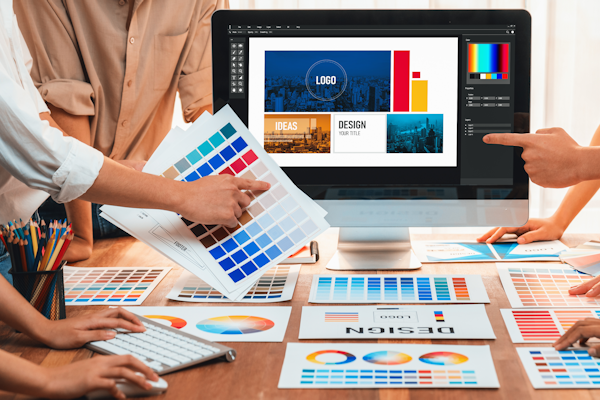 How to Choose an Attractive Color Palette for Your Website
How to Choose an Attractive Color Palette for Your Website
When it comes to web design, your color palette plays a crucial role in creating an appealing and engaging user experience. The right color palette can evoke emotions, enhance brand identity, and guide users through your website seamlessly. However, choosing the perfect color palette can be a daunting task, especially with the vast array of options available. In this blog post, we will explore some practical tips to help you select an attractive color palette for your website that captivates your audience and leaves a lasting impression.
1. Understand Your Brand: Before diving into the world of colors, it’s essential to have a clear understanding of your brand identity. Consider your brand’s values, target audience, and overall message. Is your brand playful and vibrant, or is it more professional and sophisticated? This foundational knowledge will guide you in selecting colors that align with your brand personality and evoke the right emotions in your visitors.
2. Use Color Psychology: Colors have the power to evoke specific emotions and associations in people’s minds. Understanding color psychology can help you strategically choose colors that convey the desired message. For example, blue is often associated with trust and reliability, while yellow represents optimism and energy. Consider the emotions you want your website visitors to feel and select colors that align with those emotions.
3. Start with a Base Color: Begin your color palette selection by choosing a base color that reflects your brand’s essence. This could be a color from your logo or a shade that you find visually appealing. Tools like Adobe Color and Coolors can assist you in generating complementary colors based on your base color, providing a starting point for your palette.
4. Consider Contrast and Accessibility: While aesthetics are crucial, it’s equally important to ensure that your color choices are accessible to all users. Pay attention to contrast when selecting colors for your website. Poor contrast can make text difficult to read, causing frustration for your visitors. Use tools like WebAIM’s Contrast Checker to ensure your color combinations meet accessibility standards and are legible for everyone.
5. Balance the Palette: When finalizing your color palette, strive for balance. Aim for a mix of primary, secondary, and accent colors that harmonize well together. The 60-30-10 rule is a popular guideline in design: 60% of your palette should consist of a dominant color, 30% of a secondary color, and 10% of an accent color. This approach creates visual hierarchy and prevents your website from appearing chaotic or overwhelming.
6. Look for Inspiration: If you’re still unsure about the color palette for your website, seek inspiration from various sources. Browse through websites in your industry, explore design platforms like Dribbble and Behance, or even look at nature, art, and fashion for inspiration. Pay attention to color combinations that catch your eye and analyze why they work well together. Adapt those insights into your own unique palette.
7. Test and Refine: Once you have selected your color palette, it’s essential to test it in different contexts and on various devices. Colors can appear differently depending on screens and devices, so ensure that your palette translates well across platforms. Additionally, gather feedback from others, conduct A/B testing, and make refinements if necessary to improve the overall user experience.
Choosing an attractive color for your website is a vital step in creating a visually appealing and engaging online presence. By understanding your brand, leveraging color psychology, considering accessibility, and maintaining balance, you can create a color palette that resonates with your audience and reinforces your brand identity. Remember, selecting the right color palette is not a one-size-fits-all approach, so don’t be afraid to experiment and refine until you find the perfect combination that truly represents your brand and captivates your website visitors.
